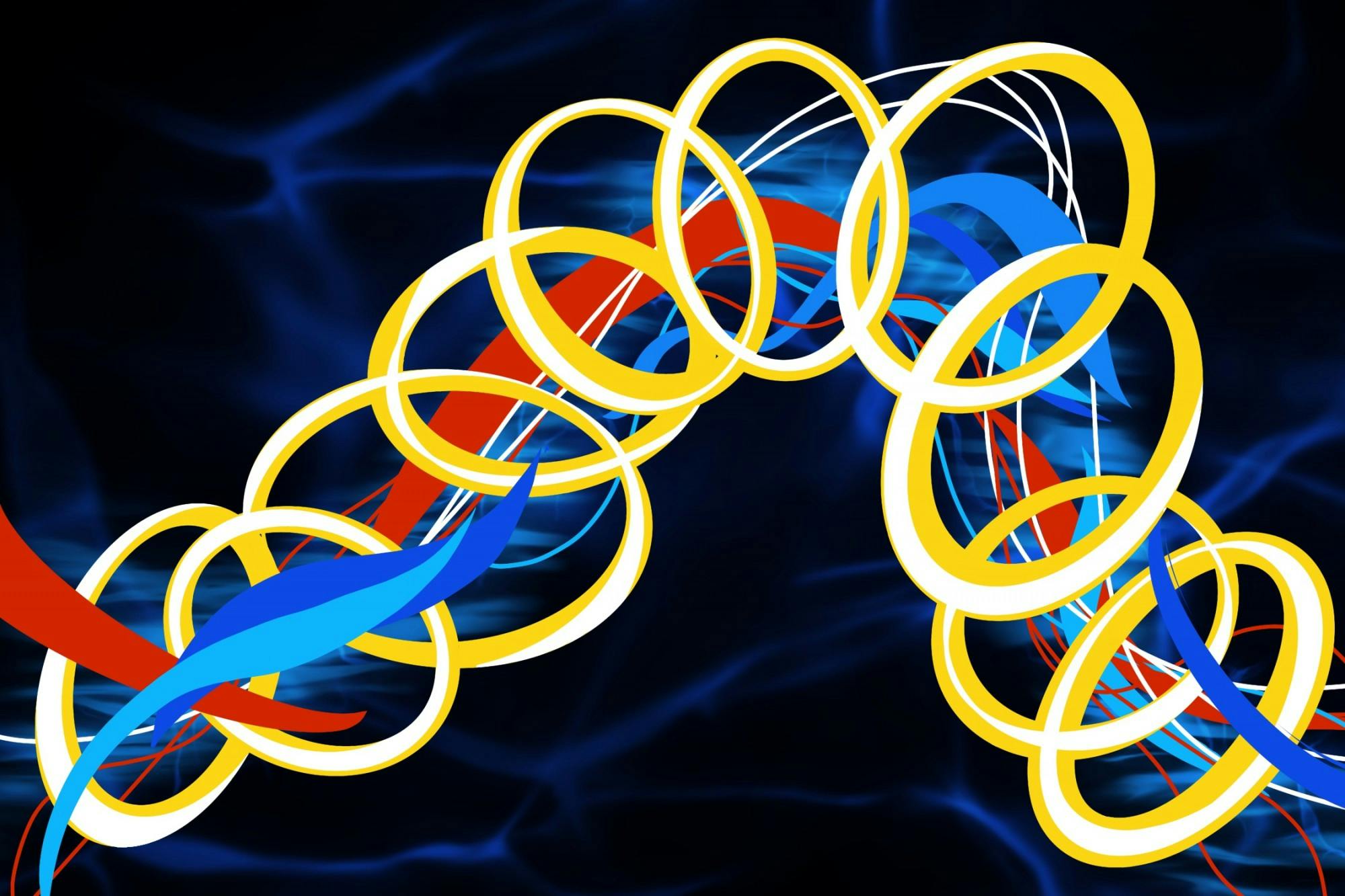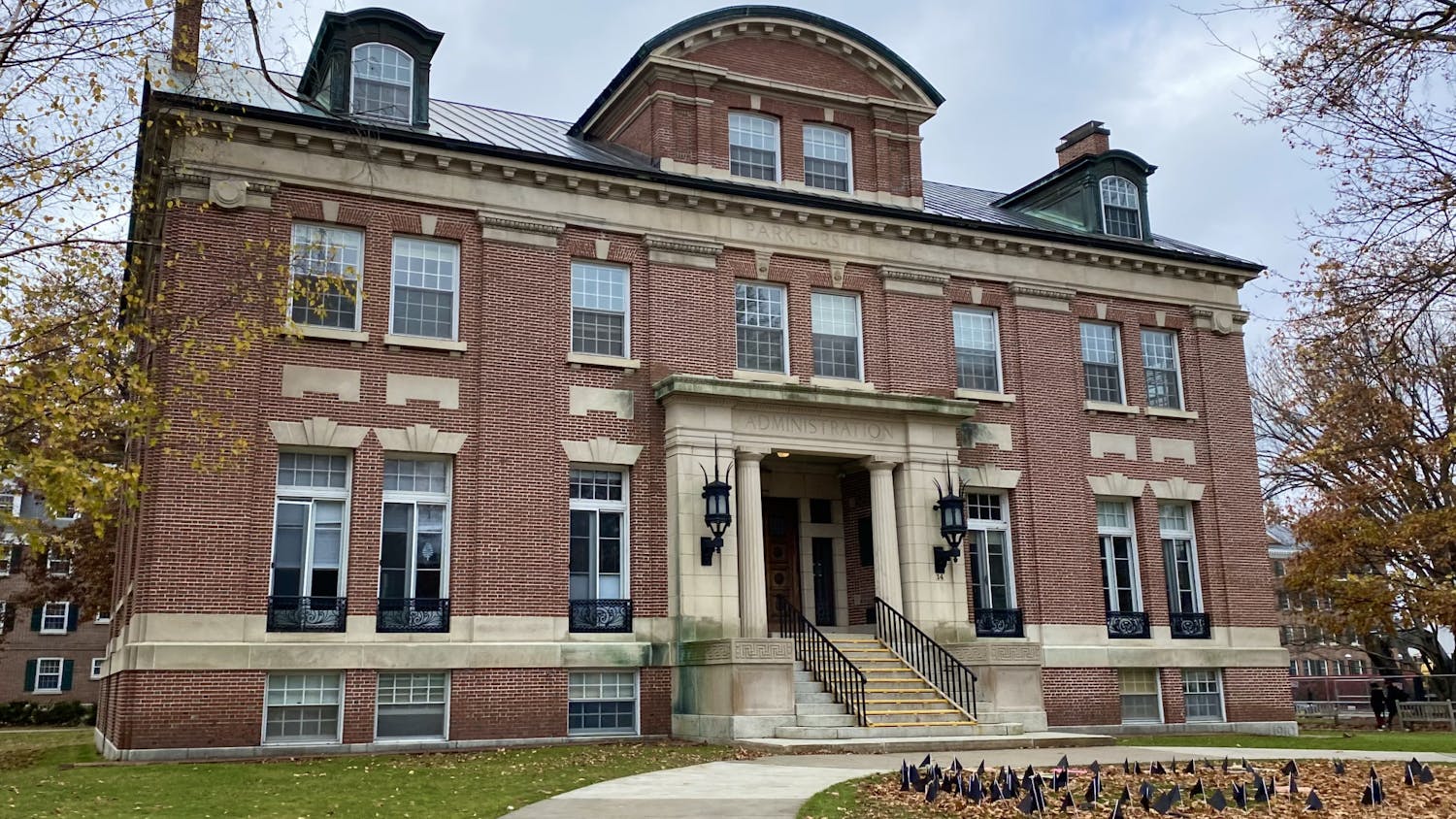“Shang-Chi and the Legend of the Ten Rings” introduces Shang-Chi (Simu Liu), the titular character, as the newest superhero in the Marvel Cinematic Universe. Released in theaters on Sept. 3, Shang-Chi is the first Marvel movie to feature a predominantly Asian cast, have characters with Chinese names and incorporate Mandarin dialogue. The movie weaves classic Marvel action scenes with themes of love and family to create a film that is simultaneously fun and exciting but has the depth of a well-written story.
The movie opens with an introduction to the mythology of the Ten Rings and the mystical village of Ta Lo. While trying to conquer Ta Lo, Shang-Chi’s father, Wenwu (Tony Leung), meets Ying Li (Fala Chen) and falls in love with her. However, the people of Ta Lo refuse to let him into the village, fearing conquest by Wenwu. Wenwu’s possession of the coveted ten rings grant him immortality and mystic powers — elemental control, super strength and telekinetic abilities, the usual Marvel fare — that make him near undefeatable in battle. As an act of good faith to the villagers, and in his quest to be with Ying Li, Wenwu gives up his ten rings to be with her. After mutual sacrifice, Wenwu and Ying Li marry.
However, the renunciation of the ten rings becomes regrettable for Wenwu when Ying Li is brutally murdered and he no longer has the power to protect his family. This horrific event turns Wenwu into a hateful man, who then pushes Shang-Chi to become an assassin and neglects his daughter, Shang-Chi’s sister Xialing (Meng’er Zhang). Both siblings eventually escape from Wenwu and find roots elsewhere: Shang-Chi in San Francisco and Xialing in Macau.
Throughout the movie, evil spirits convince Wenwu that he can bring Ying Li back from the dead. He embarks on a quest to free her soul from imprisonment in Ta Lo, resorting to any means necessary to find her, including destroying the entire village. One of the film’s most important choices is that the love story does not involve the titular character, but the villain instead, a choice that humanizes Wenwu. As unlikeable as Wenwu is for the pain and suffering he inflicts on Shang-Chi and Xialing, you can’t help but afford him some sympathy, knowing that he too is in extreme pain following Ying Li’s death.
Beyond the love story of Wenwu and Ying Li, the movie tells a tale of the complex familial relationship between Wenwu and his children. At the beginning of the movie, Shang-Chi and Xialing are estranged siblings, and both of them hate their father. However, when Wenwu, Shang-Chi and Xialing reconnect, they are forced to confront their deep-seated issues. This complex relationship with their parents, marked by generational trauma, presents a relatable challenge for some Asian American youth, especially those who are the children of immigrants.
In the end, despite all that has happened between them, Shang-Chi, Xialing and Wenwu remain connected by unconditional love. Shang-Chi refuses to abandon Xialing again, even if doing so could lead to more consequences, and Wenwu finally proves his love to his children by sacrificing his life to save Shang-Chi. Shang-Chi and Xialing never explicitly forgive Wenwu, but they also aren’t expected to do so. They can love their father and still be hurt by his actions — these emotions are allowed to coexist. Shang-Chi presents a realistic and nuanced depiction of family, intertwined with traditional Chinese values that prioritize family bonds.
Though Shang-Chi’s emotional familial journey was fantastic, I couldn’t help but feel this theme was the most interesting part of his character. I found myself far more enthralled by Wenwu and Xialing. Wenwu’s tortured past and unrelenting love for Ying Li adds so many layers to his character. Xialing’s sarcasm, wit and perseverance make her the likeable underdog. In the same way that Yelena Belova (Florence Pugh) overshadowed Natasha Romanoff (Scarlett Johansson) in “Black Widow,” I felt as though Xialing overshadowed Shang-Chi. I was stunned by Zhang’s performance as Xialing, and I was shocked to find out that this is her debut film.
As for other underdeveloped characters, I felt that Awkwafina’s role of Katy Chen, Shang-Chi’s best friend, is another example of the actress being typecast as the comedic relief. Although Awkwafina has proven that she can portray different characters in films such as “The Farewell,” she is consistently cast as essentially the same person, and Katy is no different. Once the audience is re-introduced to Trevor Slattery (Ben Kingsley) –– from Iron Man 3 –– as the comedic relief in the second half of the film, Katy is finally allowed to have some dimension. We see a glimpse of her desires and struggles to overcome her fear of failure, but there is still so much more untapped potential.
Despite some weaknesses in character development, the film’s world-building was phenomenal. The land of Ta Lo is beautiful, but it is even more stunning knowing its integration of real Chinese mythology. The people there practice tai chi and are spiritually connected to the five Chinese elements of wood, fire, water, earth and metal — not the four Western elements. The animals in Ta Lo also derive from Chinese mythology: Trevor Slattery’s furry pet, Morris, is a hundun. In terms of some other mythological creatures, there are the fenghuang (phoenixes), huli jing (nine-tailed foxes), qilin (creatures with horns and dragon-like features) and shishi (guardian lions). Most importantly, the dragon that protects Ta Lo is clearly Chinese: It lives underwater, and its physical appearance resembles that of a snake. It does not breathe fire or have wings, and it slithers through the air instead of flying.
The fight scenes were, in typical Marvel fashion, extraordinary. The first main action sequence takes place on a bus in San Francisco as Shang-Chi fights his father’s henchmen, and it incorporates all of the explosions and quick hand-to-hand combat of a classic Marvel movie. However, in the later action sequences in Ta Lo, the fight choreography evolves and becomes more similar to that of East Asian martial arts. The choreography resembles fight scenes from popular kung fu movies from the 1970s, such as those featuring Bruce Lee.
“Shang-Chi and the Legend of the Ten Rings” brings together the elements of a typical superhero movie — exciting action scenes and a protagonist with something to prove — and adds depth by layering themes that an audience can connect with, regardless of superhero status. Moreover, while it’s not a movie just for the Asian American audience, it speaks uniquely to them, and that duality in itself is significant. The film sets up an exciting look at the future of Marvel: one that is culturally aware and adds a depth to stories beyond just the action scenes.
Rating: ★★★★☆
Jessica Sun Li '24 is a sociology major and English minor from the suburbs of Chicago. She was the 180th Directorate's arts editor, and her passion project is the "Dear Mirror" column. Outside of The Dartmouth, she is involved in the figure skating team and sociology research. She really wants to adopt a cat.




